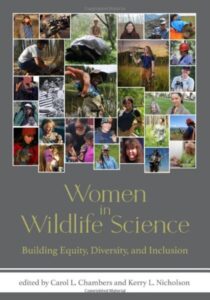 When I was a lad growing up in a small coastal town in the Pacific Northwest, the high school I attended had a special program to teach the skills needed to obtain employment in the field of fisheries management. It was taught by an old commercial fisherman with whom my father had attended school in the same town and fished alongside on the lower Columbia River ever since. As I recall, everyone who took classes in the program was male. I don’t ever remember seeing, or even hearing of, a woman being a fish & game agent, hatchery manager, or anything similar. There were plenty of women who worked the lines in the canneries that lined the river’s edge – my aunts and cousins being among them – but none in any position of authority pertaining to fish or wildlife management.
When I was a lad growing up in a small coastal town in the Pacific Northwest, the high school I attended had a special program to teach the skills needed to obtain employment in the field of fisheries management. It was taught by an old commercial fisherman with whom my father had attended school in the same town and fished alongside on the lower Columbia River ever since. As I recall, everyone who took classes in the program was male. I don’t ever remember seeing, or even hearing of, a woman being a fish & game agent, hatchery manager, or anything similar. There were plenty of women who worked the lines in the canneries that lined the river’s edge – my aunts and cousins being among them – but none in any position of authority pertaining to fish or wildlife management.
Times have certainly changed since then. Today there are women throughout the many agencies and institutions that study and manage wildlife at levels ranging from local to international; however their paths to those careers was by no means the same as my male classmates back in school. In many cases these women have had to work twice as hard and be three times as good at what they do to climb the professional ladder half as fast. As I noted, times have certainly changed since I was a boy, but they haven’t yet changed to the point where women in the wildlife sciences are now on equal footing with men.
The challenges women encountered and still face in the field (both figuratively and literally) of wildlife science is the subject of the new book Women in Wildlife Science; Building Equity, Diversity, and Inclusion from Johns Hopkins University Press. Prof. Carol L. Chambers and Dr. Kerry L. Nicholson, collaborating with a diverse team of authors, present their readers with an extensive collection of personal stories and peer-reviewed scientific literature that brings the true scope of these challenges to a wider readership, both to explore as well as to present strategies that could lead to improved paradigms ranging from recruitment and education of potential wildlife scientists to career guidance and advancement.
Whether you’re presently involved in the wildlife sciences, or interested in the education and advancement of women in the workforce, this is indeed a book that should be on your “to read” list.
